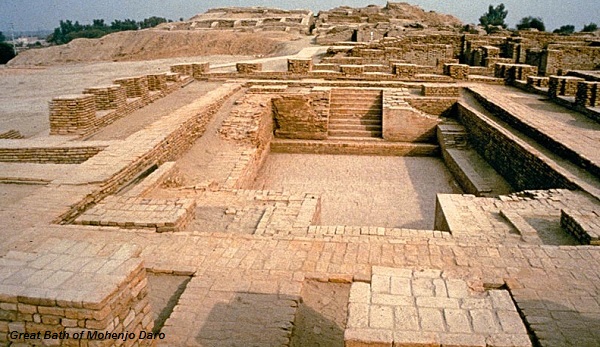
The Harappa town planning has amazed the archaeologists worldwide.
Indus Valley Civilization town planning
The town planning of the Harappan civilization upholds the fact that the civic establishments of the city were highly developed. They followed a system of centralized administration.
Settlements of Harappans with Town planning
● Harappa or Mohenjodaro in Pakistan
● Kalibangan, Lothal or Sarkotada in India
You can read NCERT notes for Ancient History for UPSC from the link below:
The architecture of Indus Valley Civilization features
Urban Cities: Remarkable town planning, and an excellent system of drainage and sanitation
Large cities divided into two parts: The ‘Citadel’ mound built on the high podium of mud-brick to the west. The town to the east was the main hub of the residential area, which was also surrounded by a massive brick wall
Streets: Fine drainage system, Well-arranged water supply system, The street lights system, Watch and ward arrangement during the night to oust the lawbreakers, Particular places to throw thrash and waste material, Public wells in every street, Well in every house, Main streets varying for 9 feet to as wide as 30-34 feet and were divided into networks of narrow lanes with great skills of dividing the cities.
Building Materials: No stone-built house in the Indus cities and the staircases of big buildings were solid; the roofs were flat and were made of wood.
Material used:
- Burnt bricks
- Sun-dried bricks
Drainage System
Advanced drainage and sanitation system. Each house had horizontal and vertical drains and the house drains were connected with road drains. There were underground drains for the streets and there drains were shielded by stone slabs. Bricks were used to make the soak pits.
Great Granary
Great granary at Harappa measuring 169 fit x 135 fit. Attached to the granary were two-roomed tenements with a common courtyard.
Great Bath
- The overall dimension of the Great Public Bath is 180 feet by 108 feet. The bathing pool measured about 39 feet by 23 feet with 8 feet depth. There is a device to fill and empty the water of the bathing pool and the bathing pools were encircled with galleries and rooms.
- The urban planning of the Harappan has become a landmark for the contemporary civilization and we can get a hint of the modern-day swimming pools and storehouses from their concept of bathing pools and granaries.
- Overall the Harappa town planning was very scientific and clearly indicates that the Harappan were chiefly urban people.
Some probable question for prelims and mains given below, which IAS aspirants can practice.
What was the main feature of Indus Valley Civilization?
- Rural Planning
- Town Planning
- Art and Architecture
- Administrative System
Ans. B
Also Read:
| How to study Ancient History for UPSC | Seals of Harappan Civilization |
| Indus Valley Civilization Facts | Prehistoric age in India |
Comments